How Much Does It Cost to Make a Hoodie in Pakistan with Low MOQ and Premium Customization
Have you ever ordered a dress, kurta, or suit online in Pakistan, only to find out that the product didn't match the dimensions you imagined?
The neckline appeared strange, the sleeves were too tight, and the length of the whole thing was bad. You haven’t done it alone. Thousands of people in Pakistan are affected by this issue, the wrong body measurements. And if the size is not right, no matter how expensive or stylish the outfit is, it just won’t show or give off good vibes.
This problem is the reason that body measurements mean everything. To comprehend what body measurements are in Pakistan is the initial step to saving yourself from the endless returns, wasted tailoring costs, and the stress of last-minute fitting disasters. If you follow the standard sizing in Pakistan and still decide to measure your body differently, then you would not be able to shop online with confidence. On the other hand, if you have the correct measurements along with the tailor’s help, it will be a perfect fit, and it is going to be even better if it’s your first time with the clothing brand.
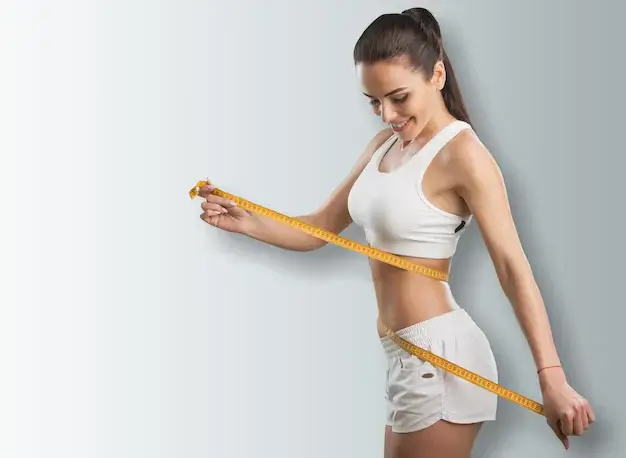
Reasons Why You Should Know Your Body Measurements in Pakistan
Clothing in Pakistan is diverse, from shalwar kameez, abayas, and kurtis to jeans, western tops, and formal suits. The problem is that ready-to-wear brands in Pakistan usually have their own size charts, which are not easy to understand. A “medium” in one brand could be like a “large” in another. Tailors are sometimes over-reliant on an assumption, and as a result, the fit they aim at is off.
Body measurements in Pakistan are what solving this problem is all about. Once you are familiar with the sizes of your bust, waist, hips, and shoulders, you can:
- Wear clothes made exactly for your body.
- Based on your measurements and the brand’s sizing, buy your clothes without any doubts.
- Ditch the money you’d have thrown on the wrong fits.
- Look your best and feel good in your clothes, be it a casual or a formal outfit.
If you compare it to a personal dressing plan, it is your own clothing blueprint. After getting it, you will never be unsure of your size again.
What Are the Standard Body Measurements in Pakistan?
Men and women in Pakistan have their sizes and measurements that follow the standards of that country; however, they are somewhat different from the Western sizes because of the average height, build, and cultural clothing preferences. Here is a rough categorization of body measurements used in Pakistan.
1. Women’s Body Measurements in Pakistan
The most common measurements of women’s bodies are the following:
- Bust – Measurement at the fullest part of the chest.
- Waist – Measurement of the narrowest part of the torso, usually just above the belly button.
- Hips – Measurement at the widest part of the hips.
- Shoulder – Length from one shoulder bone to the other.
- Sleeve length – The distance from the shoulder to the wrist.
- Armhole – The area surrounding the shoulder joint in which the sleeve is inserted.
- Kurta/dress length – Measurement from the shoulder to the floor or the desired length.
Average Pakistani Women’s Sizes (Approximate)
- Small (S): Bust 34″, Waist 28″, Hips 36″
- Medium (M): Bust 36″, Waist 30″, Hips 38″
- Large (L): Bust 38″, Waist 32″, Hips 40″
- Extra Large (XL): Bust 40″, Waist 34″, Hips 42″
These are only average values, but there is always room for slight discrepancies in the measurements of the tailors and the brands.
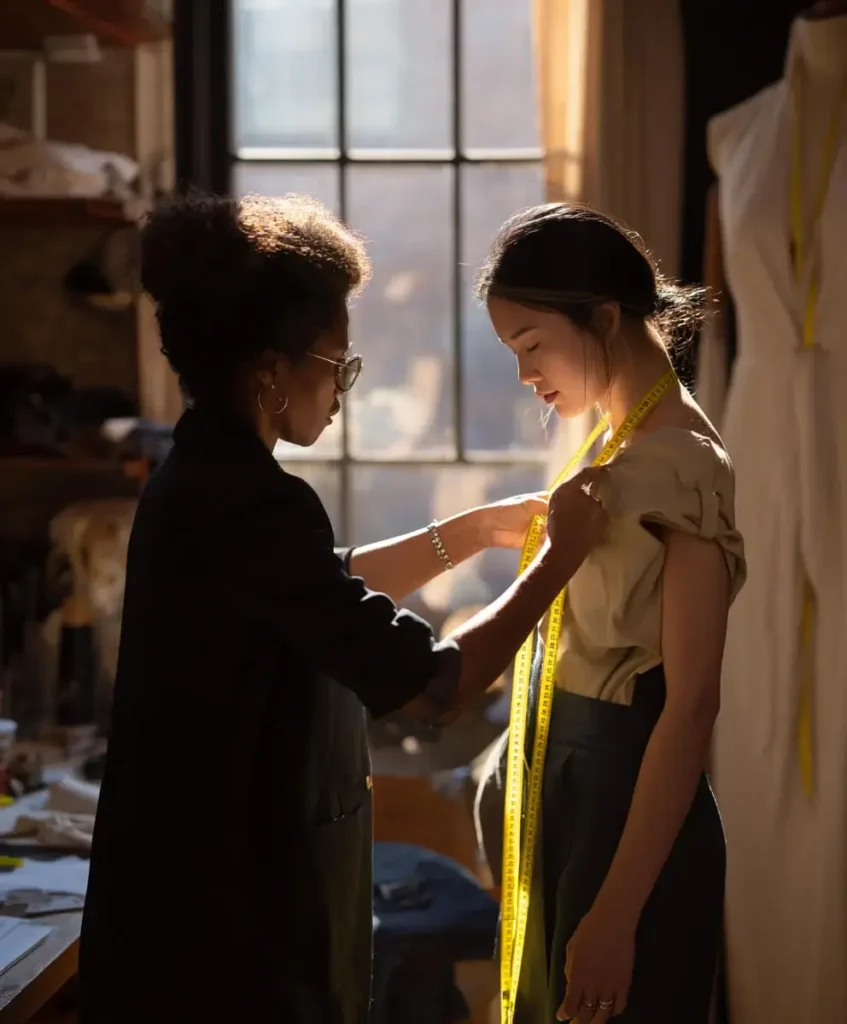
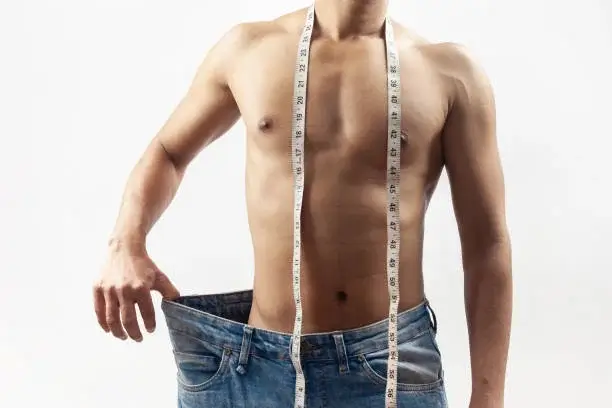
2. Men’s Body Measurements in Pakistan
Men’s Fool Proof Important Body Measurements include:
- Chest – Around the most developed part of the chest.
- Waist – Around the natural waistline.
- Hips – The most extensive area below the waist.
- Shoulder – The total width of the shoulder from one end to the other.
- Sleeve length – Shoulder to wrist.
- Inseam – Leg length from crotch to ankle (necessary for trousers).
Average Pakistani Men’s Sizes (Approximate)
- Small (S): Chest 36″, Waist 30″, Hips 36″
- Medium (M): Chest 38″, Waist 32″, Hips 38″
- Large (L): Chest 40″, Waist 34″, Hips 40″
- Extra Large (XL): Chest 42″, Waist 36″, Hips 42″
Once more, the sewing measurements can vary considerably, especially for sherwanis, waistcoats, and suits.
3. Kids’ Body Measurements in Pakistan
For children, body measurements are usually based on age + height. But since every child grows differently, parents often struggle with sizing when shopping. Pakistani kids’ clothing brands generally follow this structure:
- 0–1 year: Chest 18–20″, Waist 18–19″
- 2–3 years: Chest 20–22″, Waist 19–20″
- 4–5 years: Chest 22–24″, Waist 20–21″
- 6–7 years: Chest 24–26″, Waist 21–22″
- 8-10 years: Chest 27-30″, Waist 23-24
Kids’ shalwar kameez and school uniforms are the most common dress types in which precise height, chest, and waist measurements are a requirement for tailors.
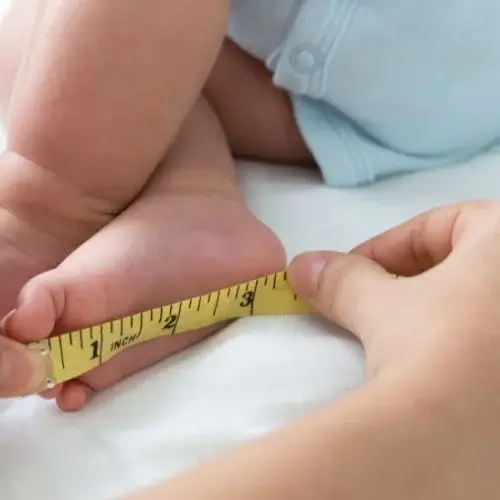
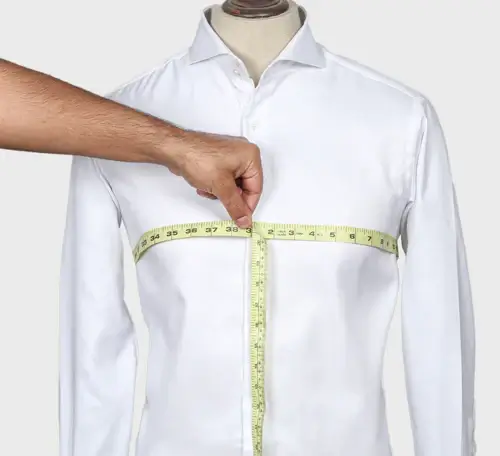
How to Take Accurate Body Measurements in Pakistan
If you are thinking about the body measurements that are in Pakistan and how to get them right, then you should implement these simple steps:
- Use a measuring tape – Always use a soft cloth measuring tape.
- Stand straight – Don’t slouch or suck in your stomach. Stand naturally.
- Measure over thin clothing – Avoid wearing thick and large clothes that add inches.
- Take help if needed – For shoulder and back measurements, ask someone to assist.
- Write everything down – Keep a record so you can use it whenever needed.
Pro tip: Pakistani tailors often request “armhole,” “daaman,” and “shalwar length” measurements for traditional clothing, so you must measure these as well.
Why Do Sizes Vary in Pakistan?
You may wonder if we are aware of the body measurements in Pakistan, why such big differences in sizes from one brand to another still exist? The explanation is based on:
- Western vs. Eastern clothing cuts – The sizing of jeans is quite different from that of shalwar kameez.
- Brand-specific charts – Every clothing brand in Pakistan establishes its own “standard” sizes.
- Tailor assumptions – Some tailors still trust their eyes more than they do measuring tools.
- Body diversity – People in Pakistan come in all shapes and sizes, so a “one-size-fits-all” approach doesn’t work.
That is the reason why your own measurements are always the most reliable guide.


Tips for a Perfect Fit in Pakistani Clothing
- Before you make an order, be sure of the brand’s size chart and your body measurements.
- Do not take a chance with “standard size” if you are buying bridal wear or formal suits; just opt for custom stitching.
- Measure yourself every 6–12 months and keep your measurements updated, as your body shape can change.
If you are shopping online, it is recommended to buy from brands that provide their size charts in inches or centimeters.
What Body Measurements Are in Pakistan for Online Shopping?
E-commerce in Pakistan is growing fast, with brands like Khaadi, Limelight, Maria B, J., and others offering ready-to-wear collections. However, the biggest complaint among customers is wrong sizing.
When you know what body measurements are in Pakistan, you can:
- Compare your bust, waist, and hip sizes with the brand’s chart.
Select the right size instead of guessing between “S” and “M.”
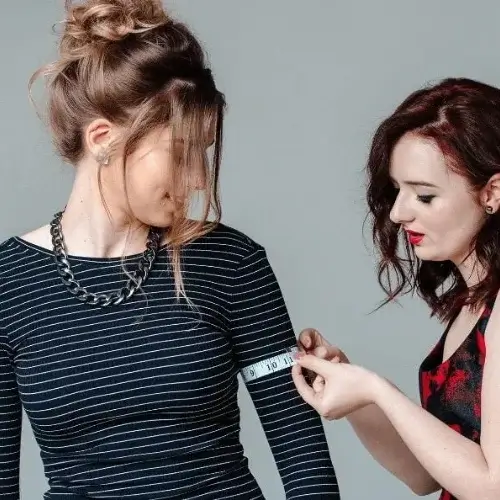
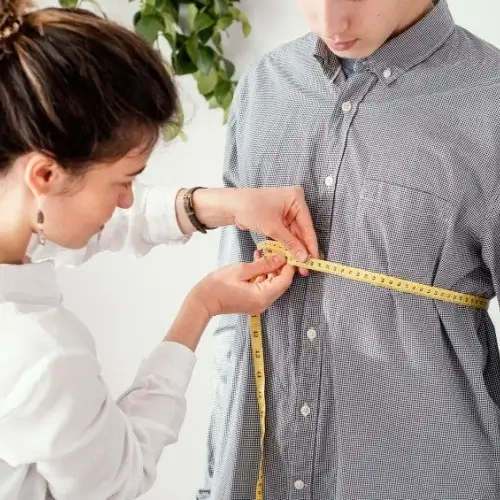
What Body Measurements Are in Pakistan for Traditional Tailoring?
Unlike ready-to-wear, Pakistani tailoring goes into deeper detail. When you visit a darzi (tailor), they usually ask for:
- Chest/Bust
- Waist
- Hips
- Shoulder
- Armhole
- Sleeve length
- Kurta/kameez length
- Shalwar length
- Trouser length
This makes traditional tailoring more precise.
Common Mistakes People Make with Body Measurements
Even after knowing what body measurements are in Pakistan, people often go wrong due to:
- Ignoring posture while taking measurements.
- Forgetting to measure the armhole and shoulder (critical for Pakistani wear).
- Using outdated measurements from years ago.
- Assuming the brand “medium” will fit without checking charts.
Avoid these, and you’ll never face a fitting nightmare again.
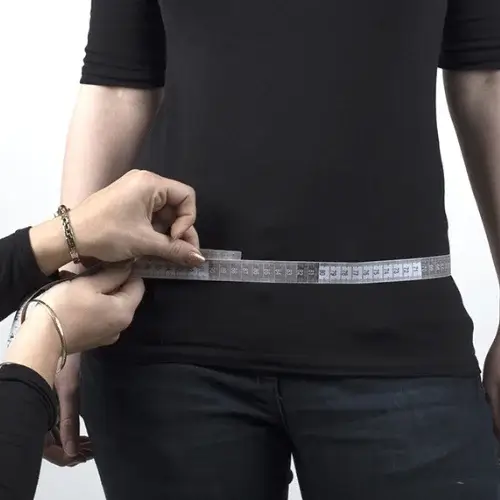
FAQs About Body Measurements in Pakistan
The main dimensions of ready-to-wear women’s clothing are the measurement of the bust, waist, and hips. The sizes usually range from Small (Bust 34″, Waist 28″, Hips 36″) to XL (Bust 40″, Waist 34″, Hips 42″) as the primary measurements.
No, Pakistani sizing is a bit smaller than international sizes. For instance, a Pakistani “Medium” may correspond more to a “Small” of UK or US standards.
Stand straight and take measurements of your body with a measuring tape for bust, waist, hips, shoulder, and armhole. For traditional wear, also measure the shalwar and kurta length.
Every brand designs its own sizing standard based on the particular customer profile it addresses. It is for this that comparing your personal measurements with their chart is so important.
At least once a year, or every time you find that you have lost or gained weight. Even small changes can significantly impact clothing.
Final Thoughts
The most important thing about fashion is the fit. Knowing what body measurements in Pakistan are enables you to have control of your wardrobe – it is totally up to you if you want to shop online, visit a tailor, or make your bridal outfit by yourself.
By using your personal measurements as the real standard instead of “standard sizes” which don’t always fit, you provide yourself with the opportunity to save money, time, and frustration. With this, you can be sure of always looking at your best.
So if you shop or get clothes made in Pakistan next time, why not start with the right measurements? I mean, the right size leads to the right style, and the right size has to come from the correct measurements.
